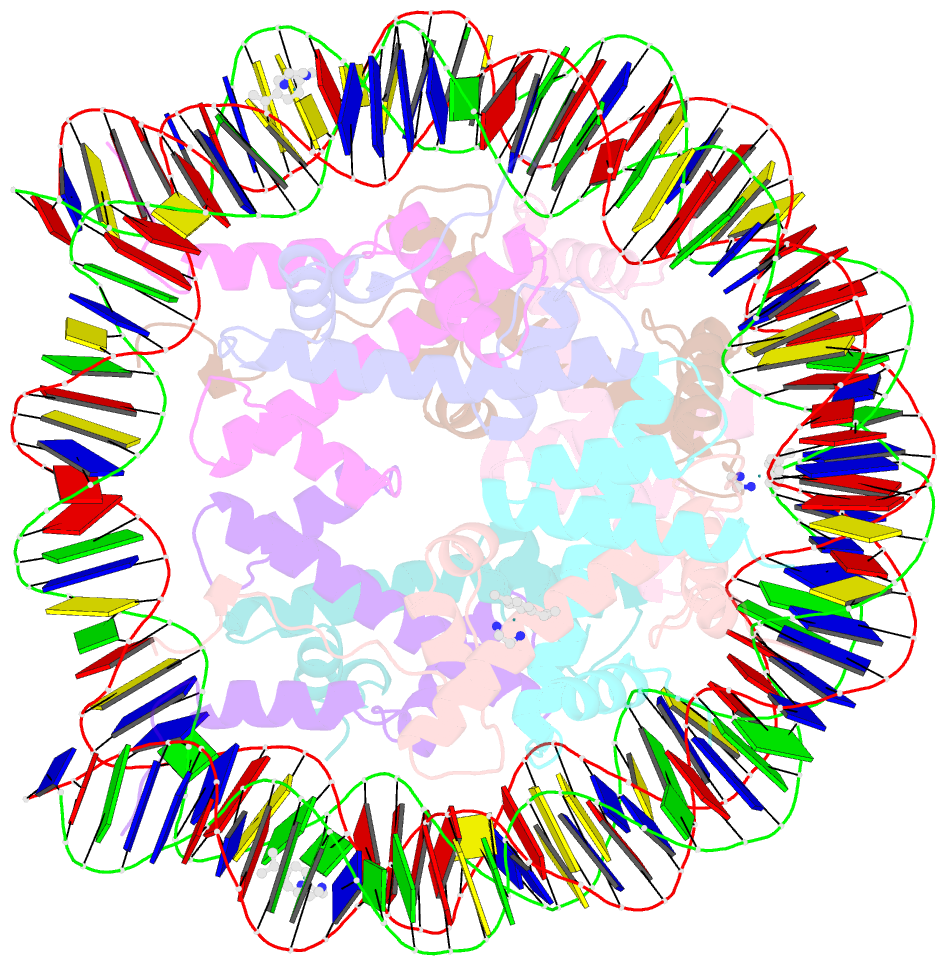Summary information and primary citation
- PDB-id
- 4kgc; SNAP-derived features in text and JSON formats;
DNAproDB
- Class
- structural protein-DNA
- Method
- X-ray (2.69 Å)
- Summary
- Nucleosome core particle containing (eta6-p-cymene)-(1, 2-ethylenediamine)-ruthenium
- Reference
- Adhireksan Z, Davey GE, Campomanes P, Groessl M, Clavel CM, Yu H, Nazarov AA, Yeo CH, Ang WH, Droge P, Rothlisberger U, Dyson PJ, Davey CA (2014): "Ligand substitutions between ruthenium-cymene compounds can control protein versus DNA targeting and anticancer activity." Nat Commun, 5, 3462. doi: 10.1038/ncomms4462.
- Abstract
- Ruthenium compounds have become promising alternatives to platinum drugs by displaying specific activities against different cancers and favourable toxicity and clearance properties. Nonetheless, their molecular targeting and mechanism of action are poorly understood. Here we study two prototypical ruthenium-arene agents-the cytotoxic antiprimary tumour compound [(η(6)-p-cymene)Ru(ethylene-diamine)Cl]PF6 and the relatively non-cytotoxic antimetastasis compound [(η(6)-p-cymene)Ru(1,3,5-triaza-7-phosphaadamantane)Cl2]-and discover that the former targets the DNA of chromatin, while the latter preferentially forms adducts on the histone proteins. Using a novel 'atom-to-cell' approach, we establish the basis for the surprisingly site-selective adduct formation behaviour and distinct cellular impact of these two chemically similar anticancer agents, which suggests that the cytotoxic effects arise largely from DNA lesions, whereas the protein adducts may be linked to the other therapeutic activities. Our study shows promise for developing new ruthenium drugs, via ligand-based modulation of DNA versus protein binding and thus cytotoxic potential, to target distinguishing epigenetic features of cancer cells.





